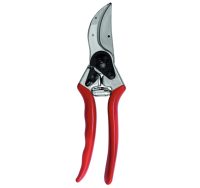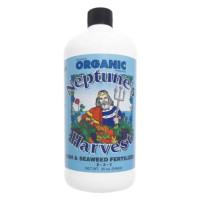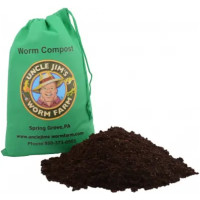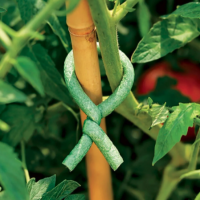
Making the absolute most of our garden spaces is a goal of every spring when the planning begins. But most years I end up planting way too many of one thing and never enough of the other—a battle that is both ongoing and hard to win mostly because so much can happen to seedlings when they’re most fragile.
Utilizing the space I have at my disposal took a turn for the better a few years ago when I finally started to look into companion planting. I’d heard all kinds of stuff about it but never really thought it would make as much of a difference as I’d like it to, and therefore I never paid it too much mind. If I could go back in time and give myself a swift kick in the butt with a frozen boot for not having jumped into companion planting back then, I would.
So what is companion planting?
Companion planting is a natural partnership between two or more plants of different species, whose characteristics are of benefit to both plants when they grow within proximity of one another. The practice is centuries old, but and remains useful in your backyard garden today.
The Three Sisters
This method incorporates the use of squash, beans, and corn for their basic characteristics to aid in the growth and prosperity of one another. For example, the heavy elephant-ear-sized squash leaves combat weed growth while the corn provides a trellis for the bean vines to grow up. Weed suppression means more nutrients for the corn, which eats away at nitrogen; all the while the bean plants are putting nitrogen back into the soil. For a closer look at the history and how-to of planting a Three Sisters Garden, click here.
This practice is a great starting point for learning the fundamentals of companion planting, but it’s just scratching the surface of which plants are good for one another, and which aren’t.
Tomatoes
No matter what variety of tomatoes you decide to grow or how many, once they’re in the ground, I tend to start looking at what I can grow immediately underneath them. Luckily, there are plenty of options that will not only do just fine, but also benefit the tomato plant.
Basil is one such plant that really does well living in the shadow of tomatoes. Basil doesn’t mind partial shade at all, which tomato plants are MVPs at providing. Neither need pollinators to produce the goods and can handle less than ideal soil conditions, so they naturally tend to go hand in hand when planted together.
Conveniently, they go hand and hand in the kitchen as well—from fresh Caprese salad to homemade tomato sauce. If you want to mix it up, try planting various types of basil like Thai or Genovese for more expansive flavor profiles.
Second to basil is lettuce. With its shallow rooting qualities, especially leaf lettuce varieties that thrive in the same soil conditions that tomatoes do, the plants can coexist without sucking the life out of the soil. The big benefit of growing lettuce under tomato plants is that the size of the lettuce will keep the soil well-shaded, which in turn helps keep the soil cool long into the growing season. That’s a win-win as far as I’m concerned.
And as far as flavor pairings go, this is an easy place for culinary success. A fresh-picked salad is always a welcome sight on the table. Better yet, sandwich these companions between two pieces of mayonnaise-slathered toast along with thick slab bacon for a BLT better than money can buy.
Carrots & Radishes
One of the very first things you can put in the ground in spring is radishes; the plant loves cold weather. Radishes germinate and thrive in cool soil conditions—the same soil conditions that carrots favor, which is why they always end up in the same garden space together on our homestead.
Carrots don’t necessarily enjoy the cold soil temperatures right away, but by the time the radishes are done (usually 20 to 25 days after sowing the seeds) the time is right for planting carrots. Better yet, when you decide to pull those radishes, they break up the soil in such a way that is conducive to planting carrot seeds. Convenient, right?
Additionally, radishes are excellent candidates for pickles and ferments. And they’re especially good in kimchi, so no need to panic if your early haul of radish is overwhelmingly abundant.
Another great aspect is that both of these root vegetables absorb nutrients from different places within the soil they grow in. Radishes tend to feed much shallower than carrots; therefore you don’t need to worry too much about radishes depleting the soil that carrots will grow in. On the other hand, after your carrots have been thinned, you can plant radishes in the fall mixed right in with those carrots that are already well established.
Strawberries & Beans
Every single year I do my best to add more raised beds for more strawberry plants, and it wasn’t until recently that I discovered that there is one particular plant that strawberries do not mind sharing space with. To my amazement, that plant is the bush bean.
Bush beans love to grow outward, which benefits the strawberry plants by providing shade. It’s the same concept that strawberry farms use with mulching the rows of plants with straw bedding, and bean plants do this job just as well. Strawberries don’t mind a boost of nitrogen which bean plants are capable of putting back in the soil and locking in.
I should also point out that bush beans have a couple things that protect strawberries, one being that the bushing characteristics of bean plants will cover strawberries, keeping them out of sight of birds, and the foliage on bush beans is known to repel insects that might otherwise make a meal out of your berries.
Even though we’ve only scratched the surface, other vegetables that don’t mind each other are things like asparagus and strawberries, squash and sunflowers, onions and peppers, broccoli and beets, asparagus and dill—the list is as vast as it is unique and fascinating. Consider companion planting for a great way to give your garden an upper hand and save space during the growing season!









